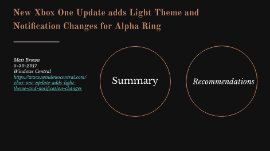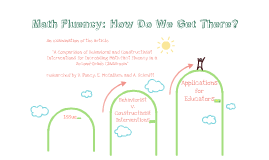Article Review Presentation
Transcript: BBA satisfaction -The Business School’s Center for Student Professional Development (CSPD) tracks job placement of its graduates. For 2017, CSPD reported that 54.6% of graduated seniors had jobs in their business-related careers. Background variables "Exploring common correlates of business undergraduate satisfaction with their degree program versus expected employment" gender, in-state resident, currently working and lived at least one semester on or near main campus. Scale ranging from 1 (strongly disagree) to 6 (strongly agree). Gary Blau, Wayne Williams, Sherry Jarrell & David Nash (2018) Exploring common correlates of business undergraduate satisfaction with their degree program versus expected employment, Journal of Education for Business, DOI: 10.1080/08832323.2018.1502144 -Prior work (Blau, G., Snell, C., Campbell, D.(2014) has found support for a professional development engagement (PDE) scale, where students were asked if different professional development activities offered by the business career services center contributed to their professional development. -When reviewing prior student-related outcomes research of Expected employment after graduation, studies have found that three general variable areas, background, curriculum-related, and professional development, are relevant. -Perceived course work challenge fits into this framework of expectations. Also had a positive correlation with satisfaction -59% of the current sample indicated they expected to have a full-time job by graduation, but a smaller percentage (51%) said this full-time job would be consistent with their major. -Deshields, Kara, and Kaynak (2005), found that college students’ perceived cognitive development, as part of their college experience, was positively related to their overall satisfaction. -A new three-item measure was used in this study. The three items were the following: “overall I am satisfied with the business core requirements,” “overall I am satisfied with my major,” and “overall I am satisfied with the BBA program. -BBA satisfaction included: academic attendance motivation advising ease and quality course work challenge professional development engagement two types of grading assessment learning perceptions (exam based and individual creative) Curriculum-related variables: -has found that prior internship experience was positively related to expected employment and employment success. Expected employment The strongest correlate was course work challenge, advising ease and quality Measurement Of Satisfaction This study, representing an exploratory effort to understand what explains such degree satisfaction, found a promising, reliable three-item measure. -Using a sample of United Kingdom college students, Douglas, and Barnes (2016) advising ease and quality, course work challenge, individual engagement, individual creative, exam-based and team based evaluation -Graduating students were also question as to whether or not they already have full time jobs prepared for them after school and also if it is consistent with the major professional development engagement and number of formal internships completed However, the number of formal internships completed was the most robust significant correlate across degree satisfaction and both types of expected employment, reinforcing the importance of students engaging in internship-related activities Thank you for listening! -Scale ranging from 1 (strongly disagree) to 6 (strongly agree). -Correlation between students satisfaction and future work life, sample size of 467 graduating business students (bachelor of business administration) - Authors: Gary Blau, Wayne Williams, Sherry Jarrell & David Nash Expected Employment Measurement Professional development variables: -Knowledgeable and approachable advising were found to be significant positive correlates of college student satisfaction -Examples of background variables include age, whether a student is currently working or not, if a student has lived on or near main campus etc. Student: Hassan Mohammad -attending workshops such as job search strategies and business etiquette, and employer mock interviews. -Prior empirical studies controlling for such variables have generally found them to be inconsistent or nonsignificant, for example, (Blau, G. (2016). "Correlates of student bachelor of business administration satisfaction and school reputation influencing perceived market value. Journal of Education for Business") did not find gender to be related to satisfaction. Work Cited -Two types of expected employment by graduation were measured: having (a) a full-time job and (b) a full-time job consistent with major. Background variables: Curriculum-related variables Method of Measuring -Journal of Education for Business Professional development variables Article Review Presentation Conclusion

















